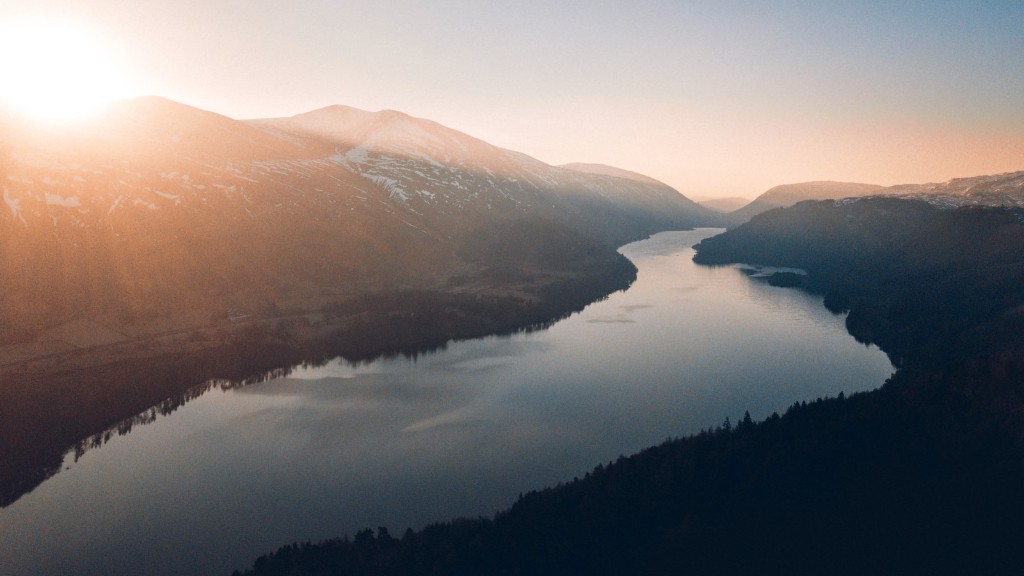Background
The Mississippi River is one of the world’s longest rivers and stretches across the United States from Minnesota to the Gulf of Mexico. The total length of the Mississippi River, including its tributaries, is approximately 2,340 miles (3,765 km) and is the largest river system in North America. The river is an important source of transportation, as it has been used to facilitate trade, transport goods, and ferry people to various destinations. In addition, the river is home to numerous species of fish, migratory birds, and other forms of wildlife.
River Dynamics
The Mississippi River has a complex network of channels, lakes, and backwaters. The river can flow from north to south and from east to west, depending on its location. In some areas, the river is divided into different channels to regulate the flow and control the levels of water. Along its course, the Mississippi River collects water from numerous tributaries, including the Illinois River, the Missouri River, and the Ohio River. The river also creates flows in response to seasonal changes: during the peak months of summer, the water level tends to decrease, while in the winter the water levels tend to remain higher.
Economic Benefits
The Mississippi River has long been a source of economic activities and prosperity in the American Midwest. The river has been used as a navigation channel to facilitate trade and commerce in the area, with goods being transported from one area to the next. In addition, the river has also been used for hydroelectric power generation, serving as an important source of the region’s electricity. Moreover, the stretch of river passing through Louisiana is a site for numerous fishing, shrimping, and oyster harvesting operations.
Environmental Factors
The existence and health of the Mississippi River is severely threatened by numerous environmental factors. Chief among these is the problem of “dead-zone” or low-oxygen levels in the river. The depletion of oxygen levels is primarily due to excessive use of fertilizers and pesticides in farming, as well as other human activities such as industrial and domestic sewage disposal. Low-oxygen levels can cause river creatures, including fish and other aquatic species, to suffer and eventually die.
Conservation Efforts
In order to address the negative environmental impacts on the Mississippi River, a number of conservation initiatives have been implemented. One of the most effective measures has been the establishment of buffer zones along the river’s course, which prevent pollution from reaching the river and help to maintain healthy levels of oxygen. In addition, the introduction of stricter regulations concerning dumping of wastewater and other harmful materials has also been beneficial to the river’s health.
Public Awareness
The public’s awareness of the importance of preserving the Mississippi River has also been increasing in recent years. Numerous environmental campaigns have been held to promote the awareness of the need to maintain the river’s health. In addition, the Mississippi has become the focus of numerous eco-tourism activities, with people visiting the river to appreciate its beauty and learn about the conservation efforts being conducted.
Research and Monitoring
The need for accurate data on the impacts on the Mississippi River has seen the development of various research and monitoring efforts in recent years. By analyzing water and sediment samples, scientists are able to track changes in water quality and pollution levels, while also identifying possible solutions to the problems facing the river. In addition, the use of satellites and other sensors enables scientists to observe the changes occurring over time and identify potential threats.
Urbanization
The Mississippi River has also been affected by the ever-increasing urbanization occurring in its vicinity. Urbanization of the river’s banks has caused increased levels of pollution, both from domestic sources and from industries released into the atmosphere. As a result, more stringent regulations have been introduced in order to reduce the river’s vulnerability to the impacts of urbanization.
Dam Construction
Dam construction is another environmental issue affecting the Mississippi River. In order to control water levels and provide a steady source of electricity, a number of dams have been built along the river’s course. While providing essential services, the construction of these dams has led to the destruction of various habitats and has caused numerous species of fish and other wildlife to suffer or even become extinct.
Flooding
The Mississippi River is also subject to flooding due to its location and its natural geography. The flooding is caused by the presence of recurring storms, tributary water levels, and other factors that can be influenced by weather. To mitigate the impacts of flooding, a number of flood embankments and levees have been constructed along the river’s course.
The Mississippi River is a major conduit for transportation, both for passengers and for goods. The river has been used for centuries as a shipping channel for transporting goods, and there are still numerous commercial river vessels operating on the waterway today. In addition, the river’s banks and banks of its tributaries have also been major locations for railways and highways.
Pollution
Pollution is another major issue threatening the health of the Mississippi River. The river is subject to water pollution due to the presence of sewage and other industrial outputs. In recent years, a number of efforts have been made to reduce the pollution levels, including tougher regulations and improved sewage treatment techniques.
Recreation
The Mississippi River is also a popular location for recreational activities. The length of the river offers a range of activities, including fishing, boating, camping, and birdwatching. Additionally, the river is also a popular destination for those looking to observe the river’s wildlife or simply to appreciate the natural beauty of its surroundings.



